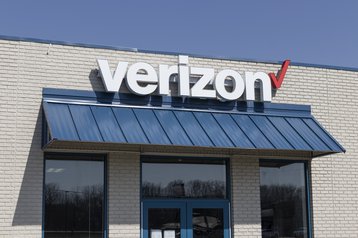Verizon has been hit with a fresh pair of class action lawsuits from shareholders, who claim the carrier misled the public about the health risks of lead-clad cables.
It follows the investigation carried out by Wall Street Journal, which revealed AT&T, Verizon, and other telecom companies of contaminating US water and soil with toxic lead cabling last month.
Lawsuits were filed earlier this week in a western Pennsylvania federal court by the Gross Law Firm and Levi & Korsinsky, LLP, with both encouraging Verizon shareholders to register for the class action.
According to Gross Law Firm, investors are eligible to apply if they’ve purchased company stock between October 30, 2018 and July 26, 2023.
"The complaint alleges that during the class period, defendants issued materially false and/or misleading statements and/or failed to disclose that Verizon owns cables around the country that are highly toxic due to being wrapped in lead, and which harm company employees and non-employees alike," said the law firm in a statement.
The statement adds that Verizon "faces potentially significant litigation risk, regulatory risk, and reputational harm as a result of its ownership of these lead cables and the health risks stemming from their presence around the United States."
Gross Law Firm also notes that Verizon was warned about the damage and risks of the cables but chose not to disclose the risks they posed to employees.
AT&T is also facing similar litigation over the issue, with Gross Law Firm and Levi & Korsisnsky both filing class action lawsuits on behalf of AT&T shareholders.
"As a result, defendants' statements about its business, operations, and prospects, were materially false and misleading and/or lacked a reasonable basis at all relevant times," concluded the statement.
Both carriers have moved to try and reassure shareholders following the fallout from the investigation.
AT&T CEO John Stankey stated that the cables still provide important customer voice and data services, while Verizon’s CFO commented its lead-clad cables only make up “a small percentage” of its copper network.
DCD has contacted Verizon for comment.
Toxic cables
According to the WSJ, the toxic lead can be found on telecom cables installed underwater, in the soil, and on poles. The investigation has found that as the lead degrades over time it is released into the water, soil, and air.
The investigation collected samples from various parts of the country where the lead could be found, including on the banks of the Mississippi River in Louisiana, the Detroit River in Michigan, the Willamette River in Oregon, and the Passaic River in New Jersey.
In total, the test samples from nearly 130 underwater-cable sites, conducted by several independent laboratories, were found to be toxic.
WSJ states that its investigation revealed a hidden source of contamination in more than 2,000 lead-covered cables that haven't been addressed by the companies or environmental regulators.
Although US mobile operators haven't used cabling containing lead since 1964, old cabling is typically left in place when traditional cabling is replaced with fiber, says WSJ.
The use of lead within US telecom cabling dates back even further, to the 1880s, initially starting as a way to sheath and protect copper wires from exposure to the elements because lead is very stable and does not rust.
At the time, lead was considered a state-of-the-art material and strong enough to guard the interior copper wires providing the critical communications infrastructure the public relied on. However, these lead-sheathed telecom cables would gradually be phased out from the 1950s.








